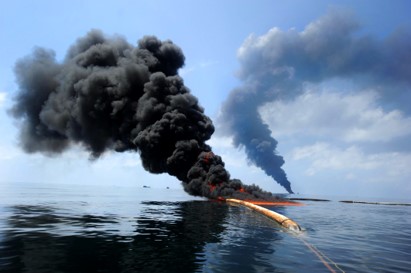Resources and Development
Resource- Definition
Anything found naturally that is useful to us provided
- It is technologically accessible
- Economically feasible
- Culturally acceptable
Role of Technology and Institution in Resource Development
- Human beings are at the centre of Resource Development. They are both skilled and unskilled.
- They interact with the nature and make use of technology and institution to develop resources.
- The regions that are developed usually have advanced technological and institutional development.
Land Degradation
Classification of Resources
- Biotic: These resources have life. Forest and Wildlife resources are examples of it.
2. Abiotic: These resources are not of biotic origin. They don’t have life. Wind, soil, minerals are examples of it.
- Renewable: These resources regenerate themselves by way of chemical, physical or biological process. Solar energy is an example of renewable resource that regenerate by chemical process. Water is an example of renewable resource that regenerate by physical process (Water Cycle). All the living beings giving birth to young ones are examples of renewable resources that regenerate by biological process.
2. Non-Renewable: These resources get exhausted faster than the nature can replenish them. Minerals and Fossil fuels are examples of it.
1. Individual: All the resources that an individual claims ownership is called Individual resources. Houses, plots, agricultural plots, open wells, bore-wells are examples of it. An individual can claim ownership of his resource so long as he pays revenue to the Government.
2. Community: These resources are owned by the community. No single individual can claim ownership of the resource. Public park, playground, burial ground are some examples of it.
3. National: Everything that lies within the land boundary of a nation and the things that lie within 12 nautical miles is called National resource. In this sense, community resources and individual resources are subsets of National resources.
4. International: Everything that lies beyond the Exclusive Economic Zone is called International Resource. No single country can claim ownership of the resource nor can any country carryout any economic activity in these zones. International waters, the Continent Antarctica are the examples of it.
- Developed: These resources are already developed using technology and institution. These resources are being used by us. Minerals like Iron ore, Manganese, Petroleum products are examples of these resources.
- Potential: These resources are not fully developed. There is a lot of potential to develop the resource. But either the institutional development or technological development is not satisfactory. Inadequate development of Solar energy in India is an example of it. Minerals dissolved in ocean waters are one more example of this type of resource.
- Stock: These are the future resources. The potentiality has been identified but the technological and institutional development are not in place. For example, the two molecules that make up water viz. Hydrogen and Oxygen are highly inflammable. We don’t know to tap the energy present in these gases yet.
- Reserve: These resources are preserved for the future use. Institutional and technological development are in place but these resources are not in use. Water stored in a dam and the reserved forests are examples of it.
India’s Exclusive Economic Zone

Consequences of indiscriminate use of resources
Depletion of resources to satisfy the need of only a few greedy individuals.
Accumulation of resources in the hands of a few, dividing the society into Rich and Poor
Global ecological crisis like global warming, water pollution, land pollution, air pollution, ozone layer depletion etc.
Sustainable Development
- Development should take place in such a way that the environment is not damaged and the needs of the future generations are taken care of.
Resource Planning
- Planning is a widely-accepted method to achieve any goal. Judicious use of resources and sustainable development requires proper planning. This planning is called Resource Planning.
Why is it required in India?
- Resources in India are not evenly distributed.
- If one region has one type of resource, it could lack other resources altogether.
- Jammu and Kashmir is rich in cultural heritage but lacks infrastructure.
- Rajasthan is rich in Solar and Wind resources but lacks mineral resources and infrastructure.
- The North-Eastern states have abundant water resource but lack infrastructure.
- To ensure balanced development at national, regional and local level resource planning is necessary.
- It is also necessary to ensure uniform economic development.
- Finally, resource planning is needed to achieve sustainable development.
Stages of Resource Planning
- Identification and making an inventory of resource is the first step. This is done by surveying and mapping. Then the quality and quantity of the resource is analysed.
- The second step is to develop appropriate technology and institution for resource development.
- The third step is to match the resource development with overall national development plan.
Significance of Technology and Institution
- Some regions in our country have abundant resources but there are classified as underdeveloped.
- There are some regions which do not have adequate resources but they are economically well developed.
- They are developed because there is appreciable technological and institutional development.
- The Europeans were attracted to countries like India because of the resources available there.
- They could exploit these resources and establish their supremacy because of better technological and institutional development.
- Therefore, in India, mere presence of resources cannot ensure development in general, and economic development in particular.
- There must be appropriate technological and institutional development to achieve economic development.
Resource Conservation
- Gandhian view on Resource Conservation: Gandhiji once said, “There is enough for everybody’s need and not for any body’s greed.”
- He placed the greedy and selfish individuals and exploitative nature of modern
- technology as the root cause for resource depletion at the global level.
- He was against mass production and wanted to replace it with the production by the masses.
- At the international level, the Club of Rome advocated resource conservation for the first time in a more systematic way in 1968.
- In 1974, Gandhian philosophy was once again presented by Schumacher in his book Small is Beautiful.
- An important contribution to resource conservation at the global level was made by the Brundtland Commission Report, 1987.
- This report introduced the concept of
- ‘Sustainable Development’ and advocated it as a means for resource conservation.
- This was subsequently published in a book entitled Our Common Future.
- Another significant contribution was made at the Earth Summit at Rio de Janeiro, Brazil in 1992.
Land Resources
Significance of Land Resources
- We live on land, we perform our economic activities on land and we use it in different ways.
- It supports natural vegetation, wild life, human life, economic activities, transport and communication systems.
Land Resources of India
%
Plains
%
Mountains
%
Plateaus
- Plains: They cover 43% of Indian land mass. They are agriculturally highly productive. They also support agro-based industries.
- Plateaus: They cover 27% of Indian land mass. They are the store houses of minerals, fossil fuels and forests. They help in the industrial development of the country.
- Mountains: They cover 30% of Indian land mass. They help in the perennial flow of some rivers. They also attract tourists. They maintain ecological balance.
Land Use Pattern in India
- Physical factors that determine the land usage pattern are topography, soil type, climate etc.
- Human factors that determine the land usage pattern are population density, technological advancement, culture and tradition.
- India is a huge land mass of 3.28 million square kilo metres.
- Data pertaining to land usage pattern in India is available for 93% of the total land mass.
- Data of the rest 7% land is not available because of inaccessible regions of the North East which have not been fully surveyed. The other reason is that some parts of India presently are in the control of Pakistan and China.
Land Degradation
The extent of Land Degradation in India
- Water Eroded 56%
- Forest Degraded 28%
- Wind Eroded 10%
- Salinity and Alkalinity 6%
Causes of Land Degradation
- Human activities such as deforestation, over grazing, mining and quarrying too have contributed significantly in land degradation.
- After mining activity is carried out, it is abandoned. Deep scars are left behind. This also causes land degradation.
- Deforestation due to mining have caused severe land degradation in states like Jharkhand, Chhattisgarh, Madhya Pradesh and Odisha.
- Over Grazing has caused large scale land degradation in states like Gujarat, Rajasthan, Madhya Pradesh and Maharashtra.
- Over Irrigation leads to increased salinity and alkalinity of the soil. This types of land degradation can be seen in Punjab, Haryana and Western Uttar Pradesh.
- Mineral processes like grinding limestone for Cement Industry and Soapstone for Ceramic Industry, throws up a huge amount of dust in the atmosphere. When this dust settles down on the earth, it forms a thick layer preventing percolation of water. The land then becomes degraded.
- Over application of chemicals in agriculture also renders land degraded.
- Industrial effluents when mix with land, renders the land useless.
Table of Soils
Soil Erosion and Conservation
- Denudation of soil cover and subsequent washing away is known as Soil Erosion
- The following are the causes:
- Gully Erosion: Deep gullies are created when running water carries out vertical erosion. The degraded land is called ‘Bad Land’. The Chambal Ravine is an example of it.
- Sheet Erosion: It is horizontal erosion of soil carried out mostly by flood or by wind.
- Faulty method of cultivation: In hilly areas, farmers plough the land the wrong way, i.e., up and down the slope which results in the formation of channels. The soil is exposed for erosion.
Conservation: The following methods can be adopted to conserve soil.
- Step Irrigation: The contour line of a hill is cut in the shape of steps on which crops are cultivated. This reduces the speed of water running down and the crops hold the soil firm.
- Shelter belts: Lines of trees are planted at the edge of the farmland to prevent sheet erosion caused by wind.
- Strip cropping: Alternate lines of crop and grass are cultivated. The thick line of grass prevents soil erosion (Sheet erosion) caused by water and wind.
One mark Questions
- What are resources?
- How are resources classified on the basis on Origin?
- How are resources classified on the basis of exhaustibility?
- Distinguish between Stock and Reserve.
- Distinguish between Potential resource and Developed resource.
- What are International Resources?
- Define National Resource.
- What is Exclusive Economic Zone?
- India has the right to mine a particular mineral beyond the exclusive economic zone. Name it.
- What is Sustainable Development?
- What is Resource Planning?
- Who is the author of the book “Small is Beautiful”?
- Name the report that introduced the concept of Sustainable Development.
- Distinguish between NSA and GCA.
- Distinguish between Current Fallow and Other than Current Fallow.
- Land usage pattern of only 93% of India’s land resource is available to us. The rest 7% isn’t. What is the reason?
- The NSA in states like Arunachal Pradesh and Mizoram is just 10%. What is the reason?
- What is the desirable forest cover as per the National Forest Policy 1952?
- What is the extent of land degradation in India?
- Name the states where deforestation and mining are the major causes of land degradation.
- Name the states where over-grazing is the main cause of land degradation.
- What is the major cause of land degradation in Punjab and Western Uttar Pradesh?
- Mention any two factors responsible for the formation of soil.
- How is Alluvial soil formed?
- Name the regions where Alluvial Soil is found.
- Distinguish between Bhangar and Khadar.
- What are Piedmont Plains? Give an example.
- What are the other names of Black Soil?
- How is the Black Soil formed in India?
- Mention any two properties of Black Soil.
- Which soil has the capacity to hold moisture for long?
- Where does Red and Yellow soil develop?
- How are Laterite soils formed?
- Name the regions where Arid soil is found.
- What is Alluvial Fan?
- What is River Terrace?
- Mention any two features of Forest Soil.
- Distinguish between Gully Erosion and Sheet Erosion.
- What are Shelter Belts?
- What is Strip Cropping?
Three mark Questions
- What are resources?
- How are resources classified on the basis of Ownership?
- How are resources classified on the basis of Exhaustibility?
- What are the consequences of indiscriminate use of resources?
- Write a note on the Earth Summit.
- What is resource Planning? Why is it necessary in India?
- Mention the three stages of Resource Planning.
- Technological and Institutional development are crucial for the Development of Resources. Substantiate.
- Write a note on the Land Resource of India.
- Mention the factors that determine Land Utilization Pattern.
- Write a note on the extent of Land Degradation in India.
- How is soil formed? Why is soil called a living system?
- Mention the properties and distribution of Alluvial Soil.
- What are the chief characteristics of the Black Soil?
- How are Laterite Soils formed? Mention the crops that are cultivated in this type of soil.
- Mention the properties of Forest Soil.
- Describe the various causes of Land Degradation.
- What measures can be taken up to prevent soil erosion?
Five Mark Questions
- What are resources? How are they classified on the basis of ownership?
- How are resources classified on the basis of Status of Development?
- What steps have been taken at the International level to conserve resources?
- What are major causes of Land Degradation?
- Mention the properties and distribution of Alluvial Soil.
- Mention the properties and distribution of Black Soil.




